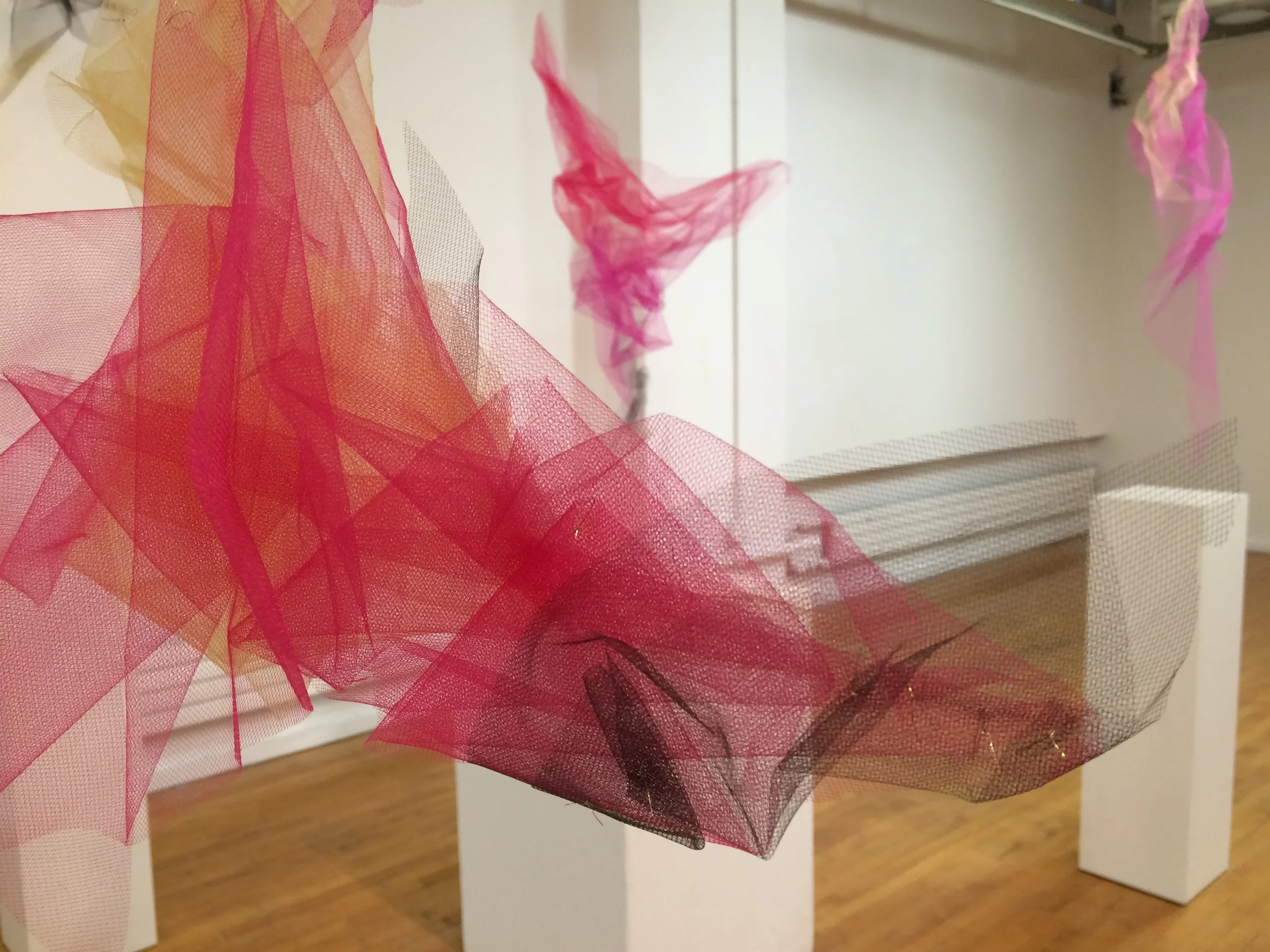






This work problematizes the notions of high and low brow culture. By inserting cheap and flashy materials--the brightly colored tulle and golden thread used in carnival costumes in the Canary Islands--into the gallery space, the limits of distinct cultural brows become blurrier; they are social and institutional constructions. The context determines what is art and what is tacky. The work's vibrant hues aim to make viewers interrogate predetermined associations with color: magenta and yellow are generally located on the opposite side of the spectrum of what is considered sophisticated and worthy of “Art.” The plinths, an integral part of the work, emphasize the absurdity of any preconception. Traditionally used as an index of the "object of art," they serve no purpose in this case: the sculptures do not need them and actually could not exist if they were placed upon these geometric institutional supports.
Esta instalación cuestiona los conceptos de alta y baja cultura. Al introducir materiales llamativos y baratos en el espacio de una galería de arte (en este caso, tul acrílico e hilos dorados, utilizados habitualmente en el carnaval de las Islas Canarias), la barrera entre estas dos nociones se diluye y se revela como una simple proyección, solo sombra. En suma, una construcción social e institucional: el contexto determina qué es arte y qué es kitsch. Los colores chillones cuestionan las ideas preconcebidas sobre tonos como el magenta o el amarillo, habitualmente situados al otro lado del espectro de lo que <<sofisticado>> o parte de la alta cultura. Por su parte, los pedestales, parte integral de la obra, subrayan lo absurdo de estos prejuicios. Tradicionalmente usados como indicadores del <<objeto de arte>>, no desempeñan función alguna en este caso: no sólo no son necesarios, sino que, de hecho, estas esculturas dejarían de ser tales si las colocásemos encima de ellos.